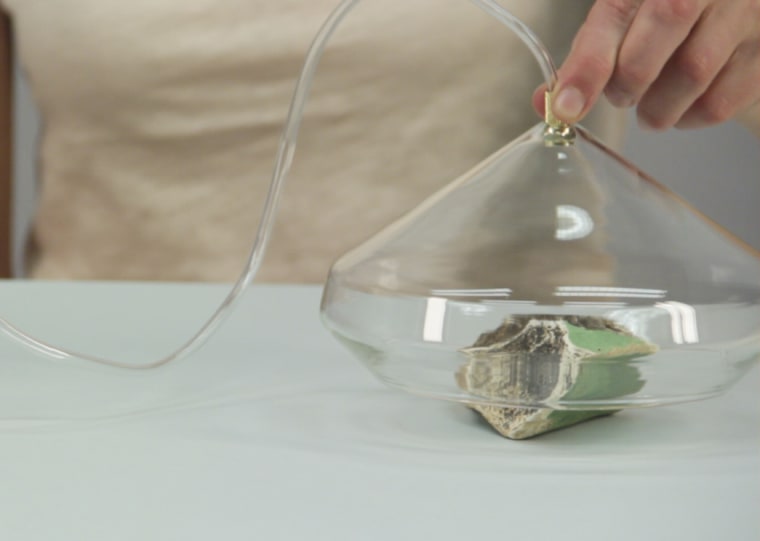It's a snap to recall the face of a loved one in your mind's eye, but powerful memories like those of mom's cookies or the beach of your youth are best conjured only by happenstance, when a passing smell sends you down Memory Lane. Artist Amy Radcliffe has conceived of a more reliable approach: a device to capture smells and a service to replicate them.
Radcliffe explained in an email to NBC News that we take pictures and video of everything to be shared and stored online, but those are limited to sight and sound.
"So I started looking at our other senses and thinking how we might preserve the memory of these and I just happened to find smell memory extremely interesting," she wrote. "It's so powerful and can seem to bypass all consciousness to trigger an emotional reaction."
Hence, her creation of the Madeleine camera, named after the little tea cakes in Marcel Proust's "Remembrance of Things Past," the smell of which was so evocative to the narrator of his past that it prompted a dive into his life story.
As with photography of yore, the Madeleine works using some elementary chemistry: You place the "bell" over the object or area to be recorded and the air inside is passed over a reactive chemical that captures the "volatiles," the bits of material and floating particles that make up every smell. The olfactory components might then be reproduced in a lab, says Radcliffe — 24 parts apple skin, 2 parts chalk dust, 4 parts graphite, 11 parts old wood for a classroom, perhaps. The resulting scent would be returned to the customer like a print.

Like Proust's infamously long series, the Madeleine takes its sweet time. After all, it's only the strongest and most pungent scents that are collected in a single whiff — and we don't always want to recreate those.
No, Radcliffe says it can take a few minutes to capture the smell of some freshly cut grass, or up to an hour to collect all the tiny particles that define the nearly unplaceable odor that you associate with your old room or a favorite spot in the forest.
But don't break open the piggy banks just yet: The device isn't quite ready for market — and may never be. "The device is a working prototype, however an unproven one," cautioned Radcliffe. "It is functioning in that it can draw air through the odor trap ... however, I have as yet been unable to test my own samples as it has been difficult to get access to a fragrance lab with the right equipment and expertise."
And even in a perfectly smellographic world, it's unclear who could "develop" the scents. Fragrance creators don't exactly take orders, complex chemical concoctions can't be made on site and, as with film, the amount you shell out for processing would likely far exceed the price of the initial equipment.
"The cost would of course depend on the components of the smell," Radcliffe wrote, "as some ingredients are problematic to get hold of, very expensive or difficult to synthesize." So no matter how much you would like it, the smell of diamonds (or anthrax) is probably not going to happen.
Radcliffe hopes to work out the rest of the system over the next few months. Until then, if you want to smell Mom's cookies, you're just going to have to bake them.
Devin Coldewey is a contributing writer for NBC News Digital. His personal website is coldewey.cc.
